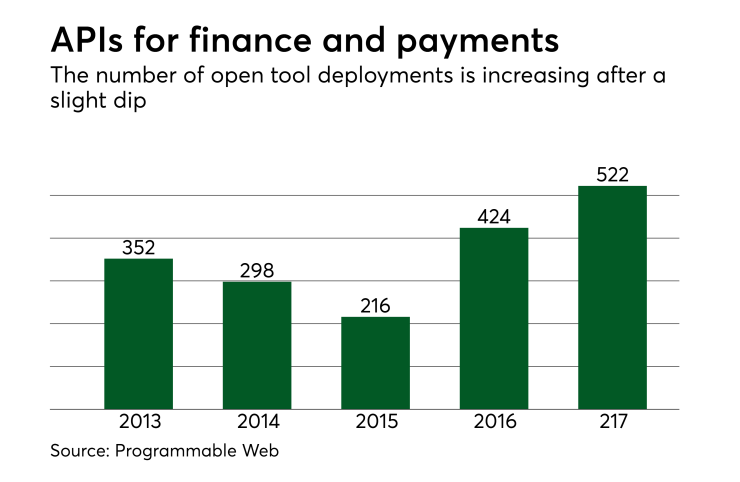While the open banking revolution has yet to officially land in America, progressive financial institutions are leveraging application programming interfaces to gain a competitive edge in the payments industry.
Shifting consumer expectations and the emergence of financial technology companies are pushing banks toward network-based banking solutions powered by secure, public APIs.
Today’s financial customers expect more from their banks and aren’t satisfied with just checking and savings services. But under the traditional closed operating system, banks are limited in their service capabilities and often struggle to make sense of their customer transaction data.

Open banking regulations require banks to relinquish their control over user data. In other words, banks will be asked to allow third parties secure access to client information. With a public API, customers are given even more control over and greater insight into their financials because they can access bank data in real time. For banks, implementing open banking standards enables banks to expand their product and service lines, providing additional value to both consumers and enterprise partners.
Unable to rely solely on core banking services, banks implementing open APIs are exploring new business opportunities and revenue-generating streams. Banks can extend their existing services by connecting with other fintech solutions to help clients better manage their financials.
Customers, for example, can consolidate all of their data from multiple banking institutions and view their information on a single portal. In turn, banks are able to offer more personalized financial advice based on previous transactions that can be delivered straight to a customer’s mobile device.
Real-time payments are also made possible with open banking solutions. At present, whenever a customer uses a credit card to make an online purchase, a third-party “acquirer” needs to authorize payments with the card company before money actually exchanges hands. With open banking, banks can immediately verify purchases without involving an acquirer first, eliminating unnecessary downtime and simplifying the process for end users.
Above all, open banking helps financial institutions improve the user experience, increasing customer satisfaction and addressing consumer needs. From offering personalized insights to simplifying payment transactions, open banking provides the spark banks need to develop modern financial tools that provide even more value to their customers. As the payments landscape grows increasingly competitive, American banks that embrace APIs will appeal to prospective customers with innovative services while strengthening loyalty among their existing clientele.





